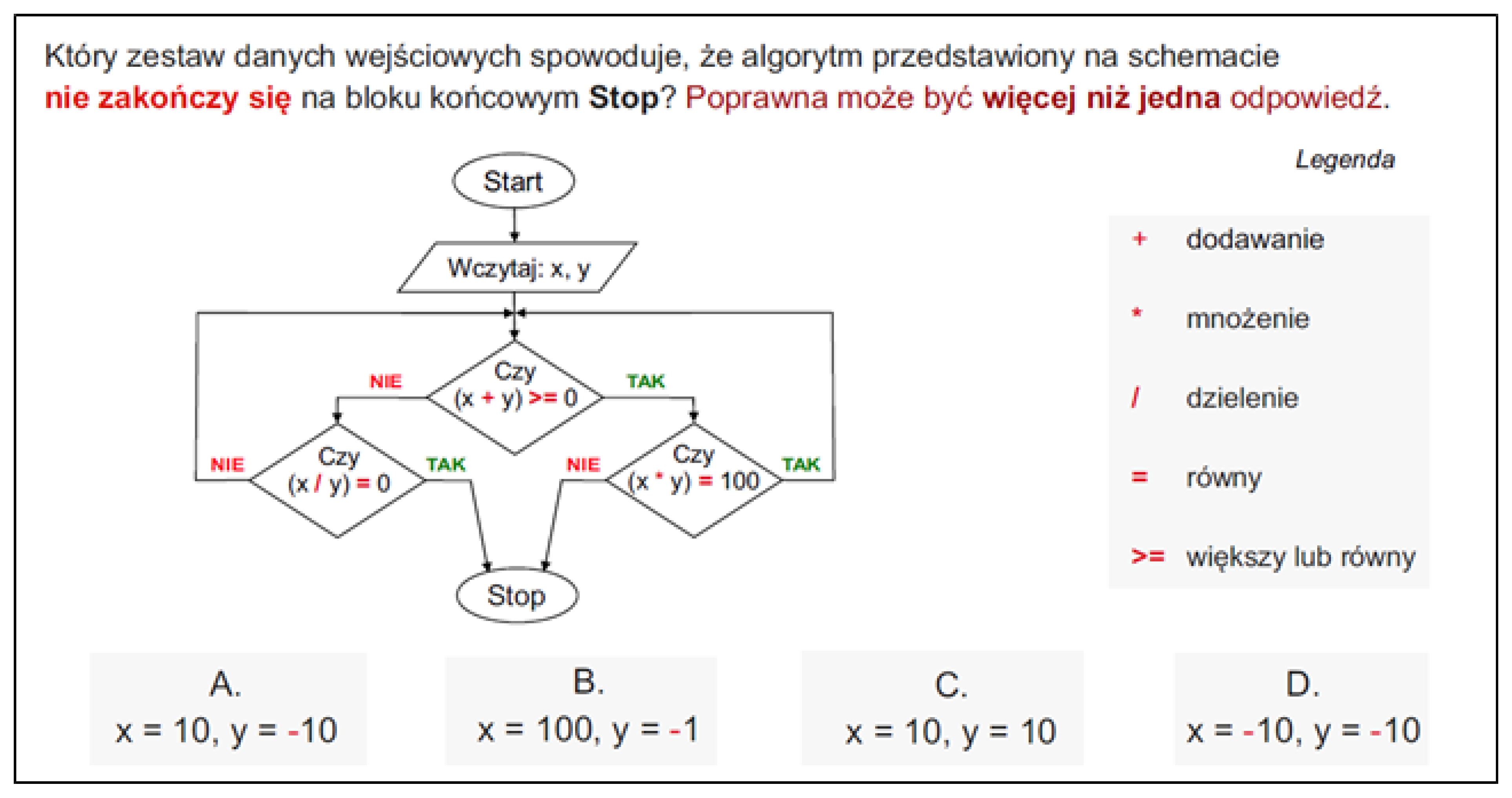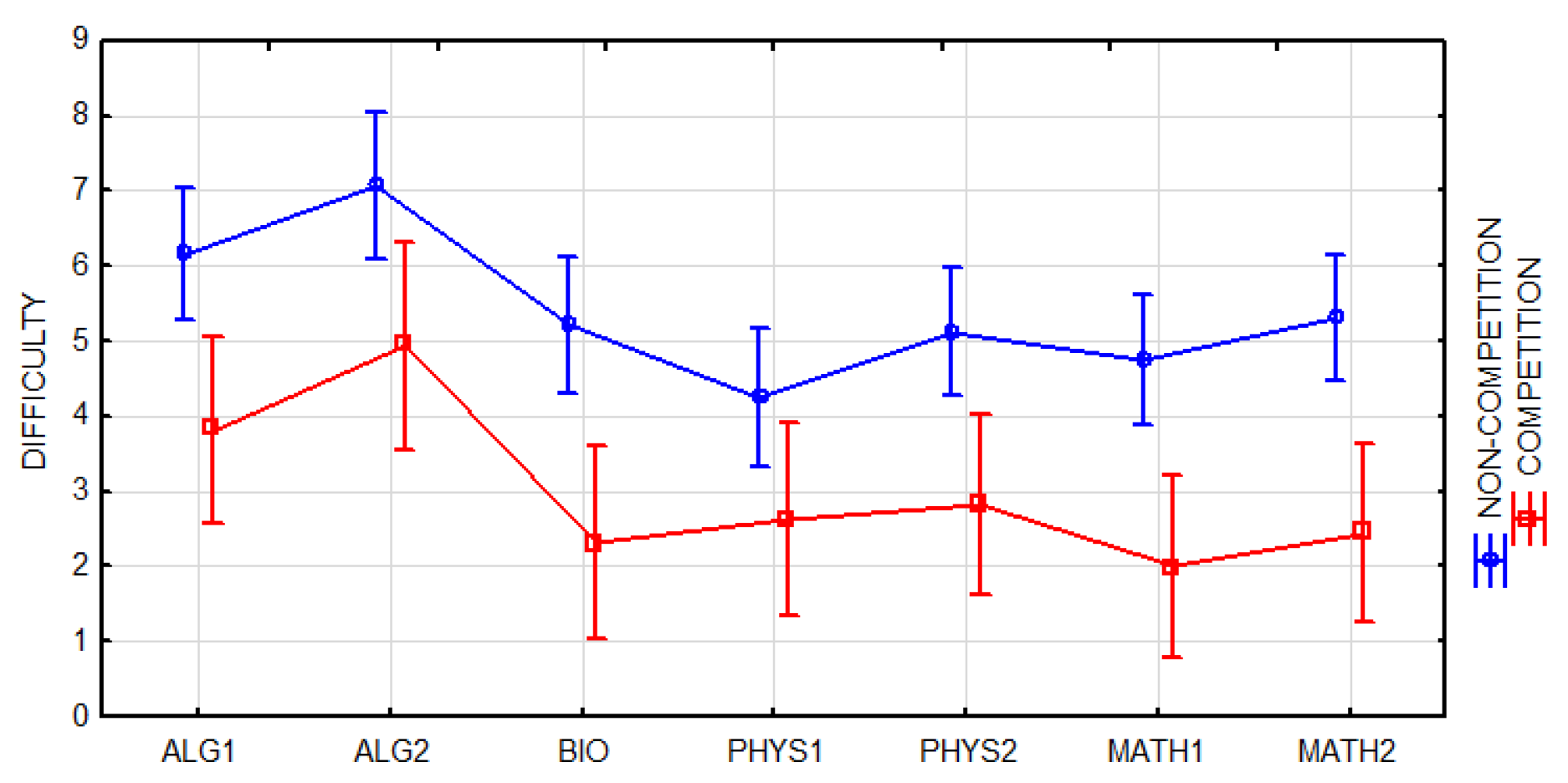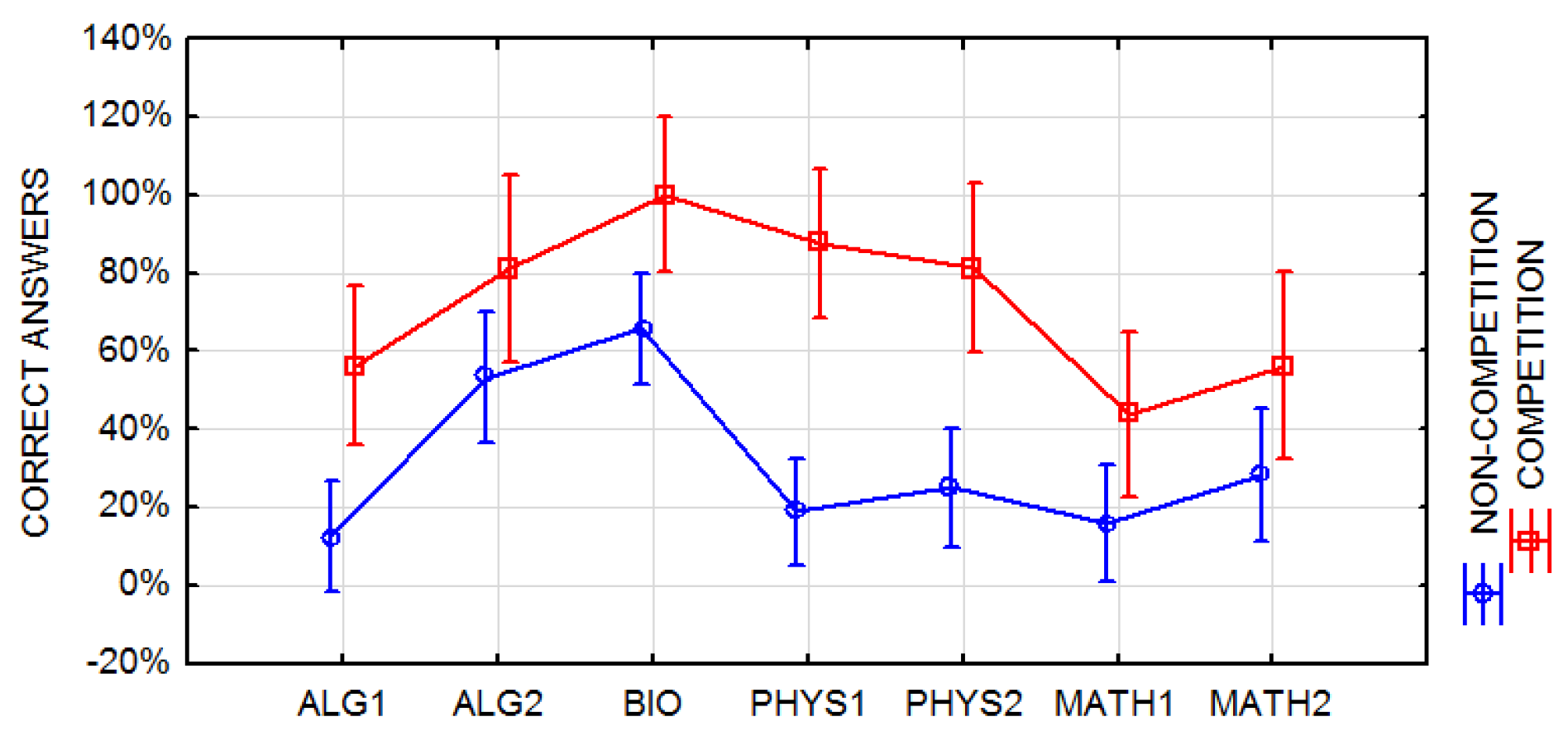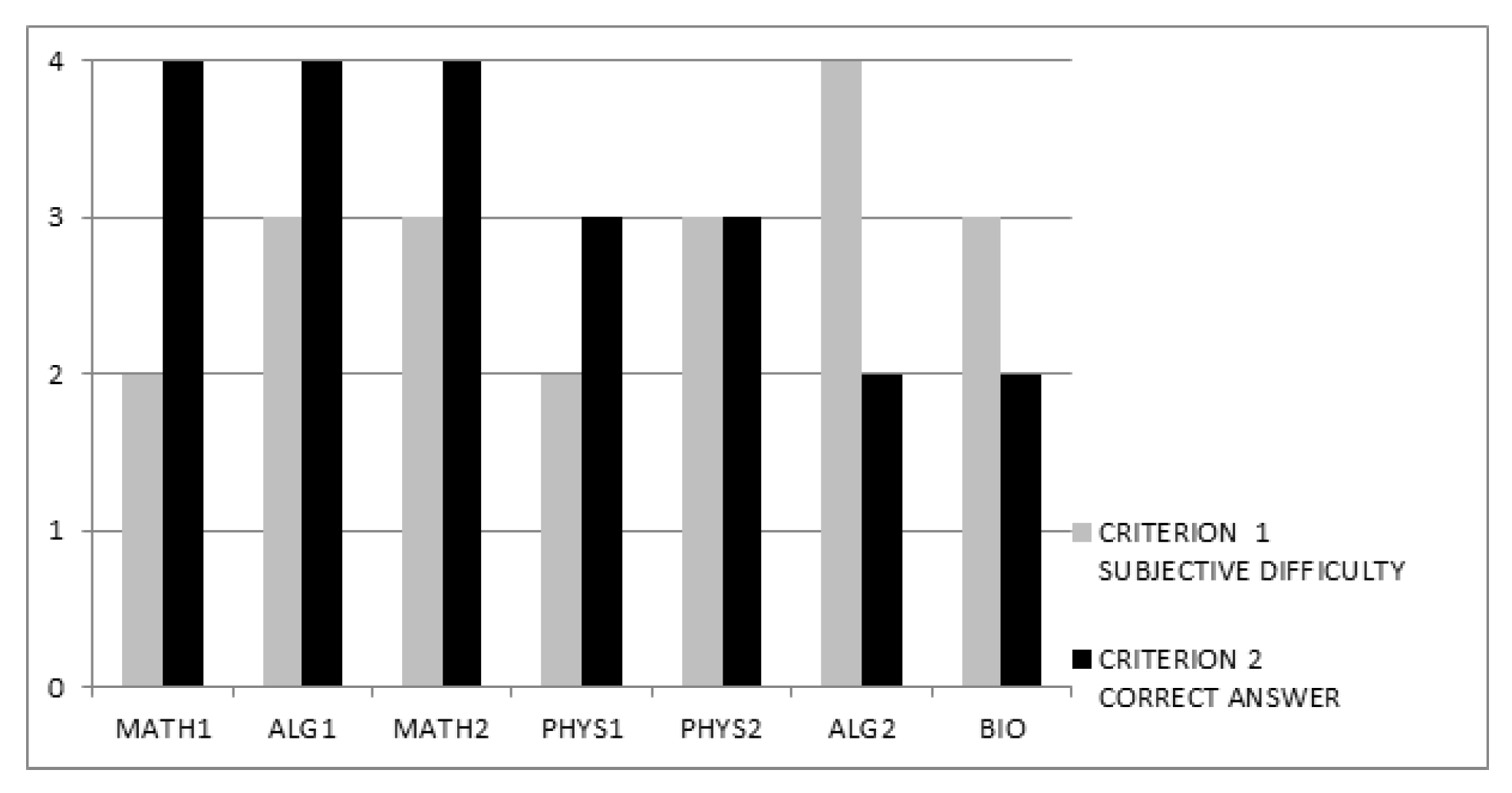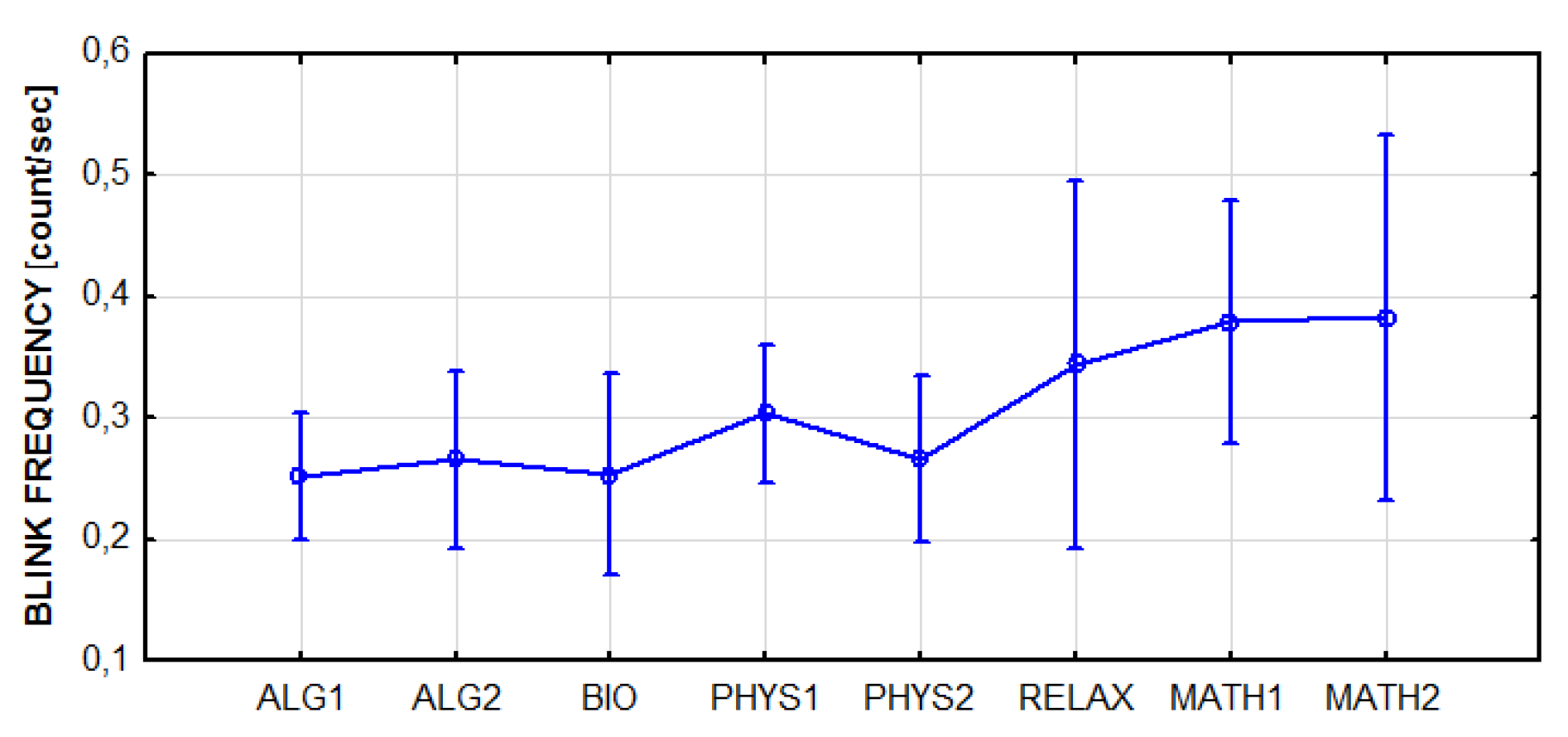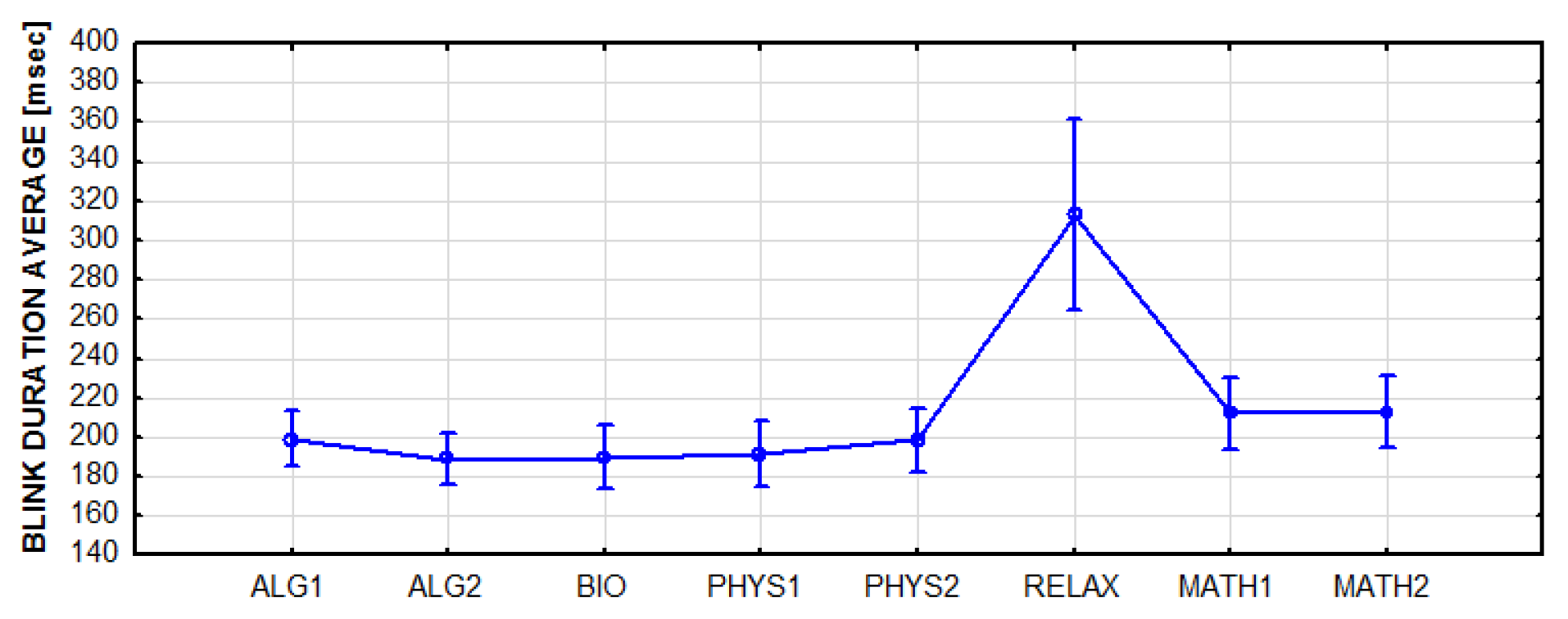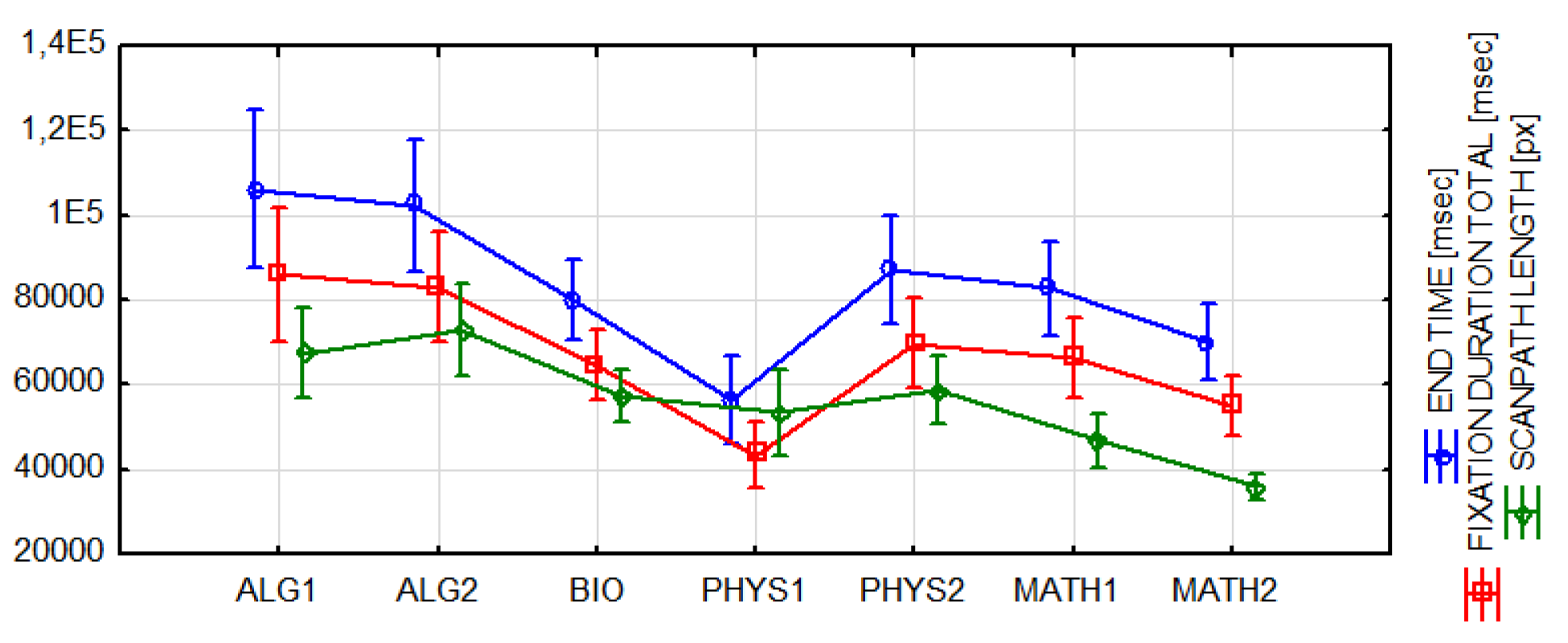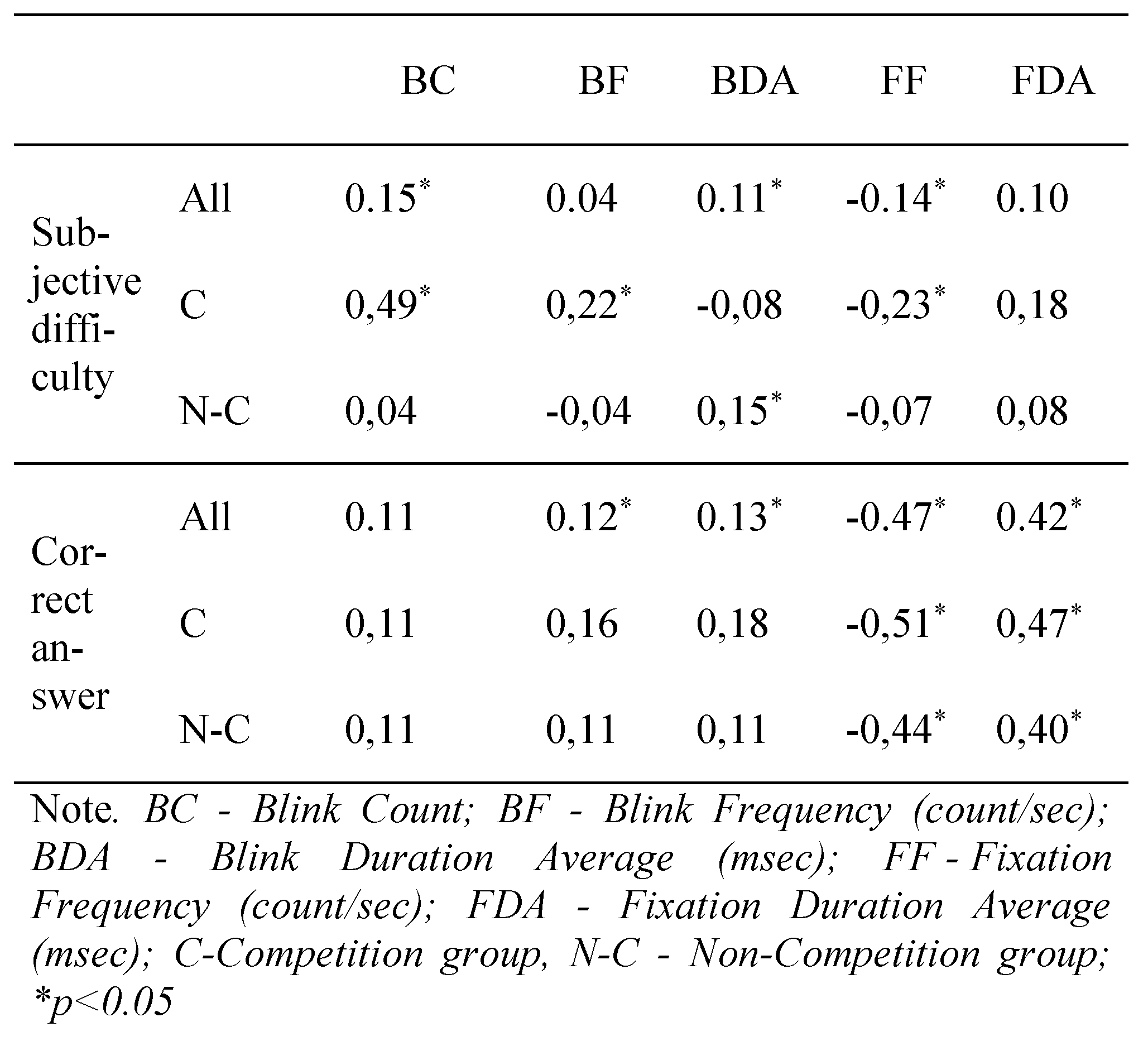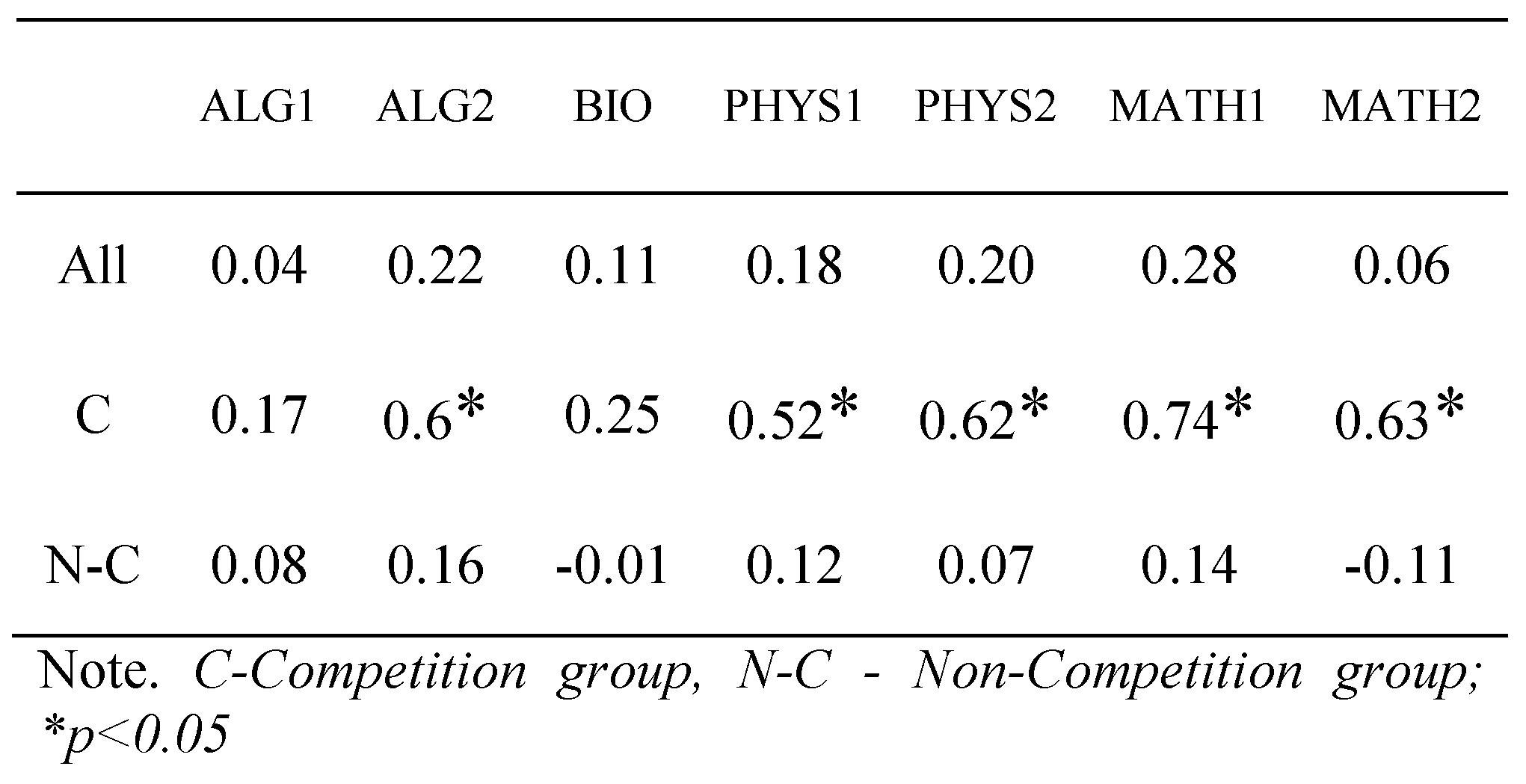Problem solving process
The task-solving process is conditioned by several factors. It depends on both a field of knowledge and the type of task and knowledge required as well as the skills and experience of the person solving the task. Solving tasks in mathematics, computer science and subjects in the natural sciences (biology, chemistry and physics) requires considerable mental activity, which is connected to both an appropriate analysis of content (text and other elements, e.g., diagrams, formulas and charts) the activation of reasoning processes at an appropriate level and the use of operational logic. The level of difficulty increases when a task includes atypical elements, including: the requirement to select more than one correct answer; an excess, deficit or ambiguity of data; and a requirement to solve a task in a way that differs from the typical methods used. As Nęcka and associates (2013) note, a division of problems according to simple-complex categories should be distinguished from a division of easy-difficult problems, and the level of complexity of a mental model that adequately describes a problem’s structure and its solution process is considered to be the most important criterion of problem complexity. While the difficulty of the problem they describe in terms of cognitive effort needed to solve the problem.
Processes or cognitive resources that are activated or used while solving problems, which can be indexes of a level of their difficulty, are connected with the concept of cognitive load. In the literature, different terms (cognitive load, mental workload, cognitive effort, mental effort) and definitions of this concept (Chandler & Sweller, 1991; Pass & van Merrienboer, 1994) are used. Young and Stanton (2001) described this idea in the following way:
‘The mental workload of a task represents the level of attention resources required to meet both objective and subjective performance criteria, which may be mediated by task demands, external support, and past experience’.
Both internal and external factors have an influence on the cognitive load level. The former are linked with the mental effort that is required by information processing, taking its structure and complexity and specificity to a particular field into account, whereas the latter are connected with the way in which the information is presented (Sweller, 1994). An important issue in determining the level of a task’s difficulty is the measurement of the cognitive load level. May and associates divided the measures used by researchers into three main groups: subjective, concerning an individual evaluation of the load degree connected with task performance (mostly according to the accepted scale); behavioural, connected with the quality of task performance (e.g., speed, accuracy, correctness); and physiological, which include the measurements of heart rate, breath or neuro-imagining techniques (ERP, PET, fMRI) and eye-tracking methods (May et al., 1990). Owing to the development of test equipment that until now was used mainly in medicine, psychology and biological sciences, there are new possibilities for the application of physiological measurements in educational investigations. More and more frequently in research, which has been conducted in recent years, specialized equipment, such as that for recording eyeball movements, has been utilized by projects aiming to understand broadly defined learning process (Lai et al., 2013). In the scope of the sciences and natural sciences, among others, different aspects of the task-solving process have been explained using this technique, (Suppes et al., 1983; Hegarty et al., 1992; Verschaffel et al., 1992; Tai et al., 2006; Nugrahaningsih et al., 2013; Stolińska et al., 2014; Andrzejewska et al., 2015), including an evaluation of the difficulty level of mathematical problems (Susac et al., 2014).
Eye movement parameters as indicators of mental effort
Eye-tracking technology. Learning is mostly connected with the perception and processing of stimuli from the environment. The most important sense (providing the most information) is sight, and that is why an eye activity became a subject of interest for neuro-educators. Visual perception activities are responsible for the analysis, synthesis and interpretation of images conveyed from the retina by optic nerves to the visual centre in the cerebral cortex. The attention system decides to select an object and to direct the eyes to it on average three times a second. As a result, eye tracking is considered to provide a precise reflection of the interactions between the cognitive processes and the visual external stimuli (Soluch & Tarnowski, 2013).
Eye-tracking is the process of measuring of eye activity. Most eye-trackers use infrared light from diodes LEDs to illuminate the eye. Systems typically use the relation between the corneal reflection, and the center of the pupil to identify eye’s position (gaze direction).
Generally, eye trackers can be divided into two types: remote and head-mounted. A head mounted solution is a good choice for field studies. The laboratories used stationary systems and an integrated GUI provides real-time information on a screen of researchers.
Technical specifications of devices are diverse. Traditional sampling rates is 60 Hz, but some new systems provide up to 1250 Hz. High frequency measurement does not guarantee its accuracy—the work must always be started with calibration of the device. A calibration procedure is required to compute the mapping between the measurements and the eye orientation (Ramanauskas, 2006). During a calibration session, the participant fixates on 7-13 points on the screen while the eye-tracker monitors the eye.
Over the last twenty years, neurophysiologic and eyetracking techniques have been used frequently as measurement methods of cognitive overload indexes in testing the attention processes of drivers and pilots and also in different problem-solving situations (Poole & Ball, 2005; Tsai et al., 2007; Rosch & Vogel-Walcutt, 2013). From an overview of the eye tracking of these investigations, the most frequently used eye-tracking measures were pupil dilation, a blink frequency, blink duration, a count of fixations and fixation duration. Fixation is a state in which eyes fix on the object observed. The length of the single fixation duration depends on information processing and is approximately 150 msec to 1500 msec (Steinman, 2004) although, for example, while reading it is 200–250 msec (Rayner, 1998). Between the fixations there is a saccade—a quick stepwise eyeball movement connected with changes in the sight focus points.
Fixations and saccades. Longer fixation duration on the image area is connected with difficulty in interpreting the information present or a greater involvement in its exploration (Just & Carpenter, 1976; Francuz, 2013). By contrast, the image elements that are comprehensible and those that do not contribute significant semantic informativeness are characterized by a shorter fixation duration (Henderson & Hollingworth, 1998). This regularity was also confirmed by many eye-tracking investigations, in which the participants solved problems in the scope of mathematics and physics. On this basis, it was found that the more complex the problem, the longer the duration of fixation or the greater their count (Rayner, 1998). It was noticed that the average fixation duration was longer when pictures of abstract character were viewed compared to figurative pictures, which indicates that the abstract pictures are subjected to deeper visual processing and can be a source of a stronger cognitive involvement connected with more difficult perception and interpretation of those works (Bałaj & Szubielska, 2014). In another research found that no relationship was shown between the fixation duration and the difficulty of the task of analysing the information presented in pictures (Backs & Walrath, 1992). Therefore, the relationships between the fixation parameters and the cognitive load indexes are not unequivocal, and they can depend on the type of task and conditions in which a task is performed. Researchers Goldber and Kotval (1999) used a fixation-saccade ratio as the index, which provided information about prevalence of the information processing processes in relation to searching. The parameter connected with saccade eye movement, the maximum value of the saccade rate (Di Stasi et al., 2010) that decreases with an increase in a number of stimuli processed, was considered to be sensitive to changes in the cognitive load. However, while considering this index, it should be taken into account that the maximum rate of the saccade reaction decreases at approximately 1.5 grades per second [°/sec] for each year over 20 years of age (Ober et al., 2009). Thus, the studies should be conducted among people in the determined age range.
Blinks and pupil dilation. By constructing an overview of the investigations on cognitive overload Poole and Ball (2006) found, that not only were the parameters of fixation and saccade considered, but the pupil dilation and frequency of blinks were also considered to be important in the experiments and indexes of information processing. This simultaneously indicated the susceptibility of those measures to the external factors, such as lighting conditions and an experimental limitation resulting from this fact. It was determined that in fixed lighting conditions with an increase in the difficulty of the task performed, the eye increased in diameter and there was a decrease in the count of blinks. Additionally, a high frequency of blinks can indicate tiredness.
In the investigations conducted in the last years, it can be noticed that there is an increasing interest in these parameters, pupil dilation change especially is a popular oculo-metric index of cognitive overload. Some researchers maintain that pupil size is a credible measure, even when lighting conditions are not tightly controlled (Halverson et al., 2012). An interesting index of the cognitive overload based on calculating slight transitory pupil dilations is Index of Cognitive Activity (ICA), developed by Marshall (2002; 2007).
Blinking is a natural reflex which may, as proven by the most recent research, plays an important role (apart from eye movement) in the information processing. Three types of eye blinks have been identified: reflexive, voluntary, and endogenous. Reflexive blinks are an instinctive reaction to the airborne pollution and a natural reflex to the noise that instills fear in people. Voluntary blinks are fully controlled, conscious movements to express acceptance, while endogenous blinks are due to perception and information processing, for example during speaking or reading. The more attention required by a task, the fewer endogenous blinks occur (Orchard & Stern, 1991).
The frequency of blinking is usually constant for each person and it ranges from 3 to 25 times per minute, yet it may increase in response to the external factors (such as humidity and ambient temperature) (Schaefer et al., 2009).
Also mental effort may radically change the frequency of blinks—a conversation and verbal prompts can increase the rate of blinking. However, there are some activities that definitely lower that frequency. It has been noted that reading decreases the frequency of blinks (Stern et al., 1994).
Also, Oh et al., (2012) observed that when the difficulty of the task varied, participants performed blinks just before and just after the periods of maximum difficulty. In general, blink rate decreases when more attention is required to perform a task. Nevertheless, other researchers claim that the higher blink rate was only in a mental arithmetic task, and this relationship was not found in a process of reading a text. In their research, the two tasks were of different nature in terms of the structure of information processing system (Tanaka & Yamaoka, 1993). They conclude that the changes in a task should bear no effect on the relationship between blink rate and task difficulty. The researchers infer that the result for blink amplitude indicated that this measure was a valid index of arousal level. All these findings indicate that blinks may be related to visual information processing.
Existing studies conclude that determining the level of cognitive load on the basis of blink parameters, such as the blink frequency and duration, is disputable. In this light, different conclusions were drawn by the researchers taking measurements of the cognitive overload of drivers and pilots (Recarte et al., 2008; Veltman & Gaillard, 1998). Therefore, an application of the parameters of blinks and pupil reaction for measuring the level of cognitive overload requires further study.
